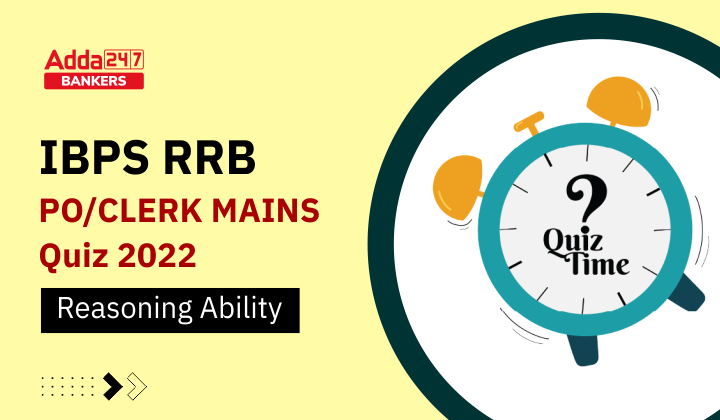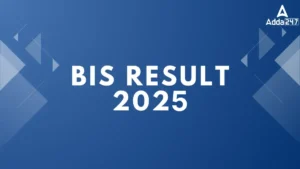Directions (1-5): Study the following arrangement of numbers and symbols carefully and answer the questions based in it.
3 6 < 5 @ 2 # 4 1 > 3 & 7 8 ] 5 $ 9 ! 4 6 % 8 5 { 2 7 } 8 +
Q1. How many such symbols are immediately preceded by a prime number?
(a) Four
(b) Seven
(c) Five
(d) Six
(e) Eight
Q2. Which element is 6th to the right of 8th symbol from the left end?
(a) 8
(b) {
(c) %
(d) 5
(e) 2
Q3. What is the sum of all numbers between @ and ! ?
(a) 40
(b) 38
(c) 37
(d) 41
(e) 39
Q4. If we drop the all odd numbers from the given series, then which element will be 5th to the left of 4th number from the right end?
(a) $
(b) ]
(c) 8
(d) &
(e) >
Q5. How many such odd numbers are immediately preceded by an even number?
(a) One
(b) Two
(c) Three
(d) Four
(e) None of these
Directions (6-10): When a number arrangement machine is given an input line of numbers, it arranges them following a particular rule. The following is an illustration of input and rearrangement.
Input: 64533 75894 35467 85434 61346
Step I: 54633 85794 45367 45834 31646
Step II: 85794 45367 45834 54633 31646
Step III: 32579 28536 16583 15463 18164
Step IV: 1079 1536 1283 1063 1064
Step V: 1063 1064 1079 1283 1536
Step VI: 6310 6410 9710 8321 6531
And step VI is the last step of the rearrangement. As per the rules followed in the above step, find out the appropriate steps for the given input.
Input: 23954 77874 15976 89336 75567
Q6. Which of the following is Step III of the given input after the rearrangement?
(a) 32777 35576 18983 54517 36325
(b) 35576 18983 54517 36325 32777
(c) 32777 18983 35576 54517 36325
(d) 32777 35576 54517 18983 36325
(e) None of these
Q7. What is the sum of the highest and the lowest number in step VI of the given input after the rearrangement?
(a) 14052
(b) 14042
(c) 13131
(d) 12942
(e) None of these
Q8. Which of the following combination of numbers, represents the 3rd number from the left end in step V and 2nd number from the right end in step II, respectively of the given input after the rearrangement?
(a) 1277, 87774
(b) 1076, 55767
(c) 1376, 95176
(d) 1225, 93254
(e) None of these
Q9. What is the difference between highest and lowest number in step V of the given input after the rearrangement?
(a) 652
(b) 658
(c) 731
(d) 655
(e) None of these
Q10. Which number is third from the left end in step II?
(a) 39836
(b) 55767
(c) 95176
(d) 87774
(e) None of these
Direction (11-15): A word and number arrangement machine when given an input line of words and numbers rearranges then following a particular rule in each step. The following is an illustration of input and rearrangement (All the numbers are two-digit numbers).
Input: 85 19 sun 52 own these ample 57 narrow 11 buy 29
Step I: 11 85 19 sun 52 own these 57 narrow buy 29 ample
Step II: 52 11 85 19 sun these 57 narrow buy 29 ample own
Step III: 19 52 11 85 sun these 57 narrow 29 ample own buy
Step IV: 29 19 52 11 85 sun these 57 ample own buy narrow
Step V: 57 29 19 52 11 85 these ample own buy narrow sun
Step VI: 85 57 29 19 52 11 ample own buy narrow sun these
Step VI is the last step of the above input. As per the rules followed in the above steps, find out in each of the following questions, the appropriate answer.
Input: 68 won appear 76 those now alone 66 52 is 92
Q11. Which word/number would be at fifth position from the right end in step III?
(a) 76
(b) Those
(c) Won
(d) Alone
(e) None of these
Q12. Which step number would be the following output?
68 76 66 92 52 those alone appear is now won
(a) IV
(b) VI
(c) V
(d) III
(e) None of these
Q13. Which of the following would be step IV?
(a) 76 66 92 52 68 won those alone appear is now
(b) 76 92 66 52 68 won those alone appear is now
(c) 76 66 92 68 52 won those alone appear is now
(d) 76 66 92 52 68 those won alone appear is now
(e) None of these
Q14. In step III, If ’92’ is related to ’68’ in a certain way and ’52’ is related to ‘won’ in the same way, which of the following would ‘those’ be related to following the same way?
(a) Now
(b) 76
(c) Appear
(d) Is
(e) Alone
Q15. Which of the following will be last step of the rearrangement?
(a) V
(b) VII
(c) VI
(d) VIII
(e) None of these
Solutions
S1. Ans. (d)
Sol. Given series – 3 6 < 5 @ 2 # 4 1 > 3 & 7 8 ] 5 $ 9 ! 4 6 % 8 5 { 2 7 } 8 +
Hence, there are six symbols which are immediately preceded by a prime number.
S2. Ans. (b)
Sol. Given series – 3 6 < 5 @ 2 # 4 1 > 3 & 7 8 ] 5 $ 9 ! 4 6 % 8 5 { 2 7 } 8 +
8th symbol form the left end – !
So, 6th to the right of ! – {
S3. Ans. (e)
Sol. Given series – 3 6 < 5 @ 2 # 4 1 > 3 & 7 8 ] 5 $ 9 ! 4 6 % 8 5 { 2 7 } 8 +
So, required sum – 2 + 4 + 1 + 3 + 7 + 8 + 5 + 9 = 39
S4. Ans. (c)
Sol. Given series – 3 6 < 5 @ 2 # 4 1 > 3 & 7 8 ] 5 $ 9 ! 4 6 % 8 5 { 2 7 } 8 +
After dropping – 6 < @ 2 # 4 > & 8 ] $ ! 4 6 % 8 { 2 } 8 +
4th number from the right end – 6
So, 5th to the left of 6 – 8
S5. Ans. (c)
Sol. Given series – 3 6 < 5 @ 2 # 4 1 > 3 & 7 8 ] 5 $ 9 ! 4 6 % 8 5 { 2 7 } 8 +
Hence, there are three numbers which are immediately preceded by an even number.
Solution (6-10):
Sol. In Step 1: The first three digits in all the numbers from the left end, are written in reverse order with in the number. No change is made to the remaining digits.
Ex-(64533) will be arranged as (54633).
In Step II: The numbers are arranged in descending order from extreme left end (according to the sum of the digits). (Number with the highest sum of digits will be arranged at extreme left end and the number with the 2nd highest sum of digits will be arranged after the 1st number and so on).
In Step III: The product of 1st and last digit from the left end of the number is written (from the left end) at the starting of each number, followed by the remaining digits in the same sequence to form a five-digit number. Ex- (85794) will be arranged as (32579).
(8 × 4) = 32, and (579) will be written in same sequence, so (32579).
In Step IV: The sum of first three digits from the left end is written at the left end of each number within the number, followed by remaining digits in the same sequence to form a four-digit number. Ex- (32579) will be arranged as (1079).
(3+2+5) = 10, and (79) will be written in same sequence, so (1079).
In Step V: All the numbers are arranged in ascending order from the extreme left end.
In Step VI: All the digits of each number are arranged in descending order within the number.
Input: 23954 77874 15976 89336 75567
Step I: 93254 87774 95176 39836 55767
Step II: 87774 55767 39836 95176 93254
Step III: 32777 35576 18983 54517 36325
Step IV: 1277 1376 1883 1417 1225
Step V: 1225 1277 1376 1417 1883
Step VI: 5221 7721 7631 7411 8831
S6. Ans. (a)
S7. Ans. (a)
S8. Ans. (c)
S9. Ans. (b)
S10. Ans. (a)
Solution (11-15):
Sol. One number and one word is arranged in each step.
In the arrangement, numbers are arranged according to the increasing order of the sum of two-digit number from left end in each step.
Words are arranged as per its first letter (followed by second letter if first letter is same) from the right end in every step. First vowel and then consonant as they appear in alphabet series.
Input: 68 won appear 76 those now alone 66 52 is 92
Step I: 52 68 won appear 76 those now 66 is 92 alone
Step II: 92 52 68 won 76 those now 66 is alone appear
Step III: 66 92 52 68 won 76 those now alone appear is
Step IV: 76 66 92 52 68 won those alone appear is now
Step V: 68 76 66 92 52 won alone appear is now those
Step VI: 68 76 66 92 52 alone appear is now those won
S11. Ans. (b)
S12. Ans. (e)
S13. Ans. (a)
S14. Ans. (e)
S15. Ans. (c)





 GA Capsule for SBI Clerk Mains 2025, Dow...
GA Capsule for SBI Clerk Mains 2025, Dow...
 The Hindu Review October 2022: Download ...
The Hindu Review October 2022: Download ...
 BIS Result 2024-25 Out for ASO, JSA and ...
BIS Result 2024-25 Out for ASO, JSA and ...





